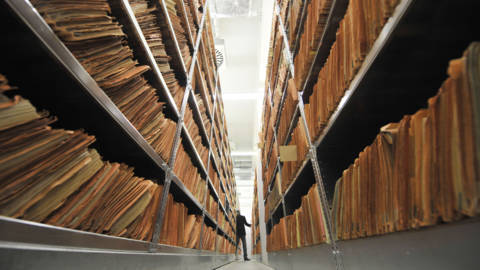There is much discussion about spying by the secret services. Civil rights activists are sometimes diametrically opposed to the government. But one question will never be answered: what does that espionage actually look like?

That we actually do not know: the secret services understandably keep their doors closed. But a German artist Simon Menner tries to provide insight into the work of intelligence. He does this through the archives of the former East German secret police, the Stasi.
Public archives
After the fall of the Wall, the archives of that service largely made public. "They have tried to destroy some, but most of the archives, you can see now," said Charioteer against the NIS in Hamburg, where he speaks at the hacker conference CCC. Earlier, he brought a book with photos from Stasi.
According Charioteer archives are very valuable because they may shed light on what exactly a secret service up to. The Stasi was an extreme or secret service that shunned few resources, but the archives "are the best we have," said Menner.
"It would be much more valuable in to see what is happening now at the NSA or the German secret service," says the artist. "But that can not, and will probably never be able to."
During three years of research Charioteer found striking images. Such as a surprise party for the top employee of the Stasi. "That was a costume party, where the revelers disguised themselves as targets of the Stasi," says Menner. For example if a doctor or a judge.
There is also a large collection of Polaroids of interiors. "They took pictures secret agents so that after an illegal search could put everything back the way it was," said Menner. "They were very good at it."
Although Menner not to say that the Stasi was similar to today's intelligence, according to him, there are similarities. "The NSA says to break the law in order to protect the same law," he says. "That's exactly what the Stasi did."
Driver also tried to get pictures from the same period in the West German secret service above table, the BND, but delivers hitherto little on.
Joost Schellevis, Research Editor / AFP

Reactie plaatsen
Reacties